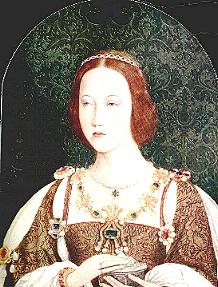As Holy Week starts today I thought it was appropriate to have a fun quiz testing your knowledge of how this week was commemorated in medieval and Tudor times. I hope you enjoy this little quiz - good luck!
Holy Week and Easter Quiz
Correct! And it marks the start of Holy Week.
Wrong! It's the sixth Sunday and it marks the start of Holy Week.
Correct! Palm leaves were rather hard to come by in Tudor England so they used greenery gathered locally which was then blessed by the priest.
Wrong! They used greenery gathered locally which was then blessed by the priest. Palm leaves were rather hard to come by in Tudor England.
Correct!
Wrong! They were burned to make ashes for the following year's Ash Wednesday ceremonies.
Correct!
Wrong! It was called a solar monstrance.
Correct!
Wrong! It was Maundy Thursday.
Correct! Christ’s suffering and crucifixion and what it meant were commemorated by the clergy creeping up to a crucifix held up before the altar on their hands and knees. When they got to the crucifix, they would kiss the feet of Christ. The crucifix was then taken down into the church for the congregation to do the same.
Wrong! It was "Creeping to the Cross". Christ’s suffering and crucifixion and what it meant were commemorated by the clergy creeping up to a crucifix held up before the altar on their hands and knees. When they got to the crucifix, they would kiss the feet of Christ. The crucifix was then taken down into the church for the congregation to do the same.
Correct! On the Wednesday of Holy Week, in Tudor times, the priest read out the passage from the Bible concerning the veil in the Temple in Jerusalem:
“And, behold, the veil of the temple was rent in twain from the top to the bottom; and the earth did quake, and the rocks rent.” Matthew 27:51(AV)
As this passage was read aloud, the Lent veil separating the chancel and the nave was dropped and put away until next year’s Lent.
Wrong! It was on Holy Wednesday. The priest read out the passage from the Bible concerning the veil in the Temple in Jerusalem:
“And, behold, the veil of the temple was rent in twain from the top to the bottom; and the earth did quake, and the rocks rent.” Matthew 27:51(AV)
As this passage was read aloud, the Lent veil separating the chancel and the nave was dropped and put away until next year’s Lent.
Correct! The sepulchre consisted of a stone or wooden niche, to represent Christ’s sealed tomb, which was filled with the consecrated host and an image of Christ. Once this was “sealed” by covering it with a cloth, candles were lit around it, and members of the church would guard it just as the Roman soldiers had done when the body of Christ was sealed in the cave.
Wrong! The sepulchre consisted of a stone or wooden niche, to represent Christ’s sealed tomb, which was filled with the consecrated host and an image of Christ. Once this was “sealed” by covering it with a cloth, candles were lit around it, and members of the church would guard it just as the Roman soldiers had done when the body of Christ was sealed in the cave.
Correct!
Wrong! It was on Easter Sunday.
Correct!
Wrong! It commemorates the Last Supper.



Leave a Reply